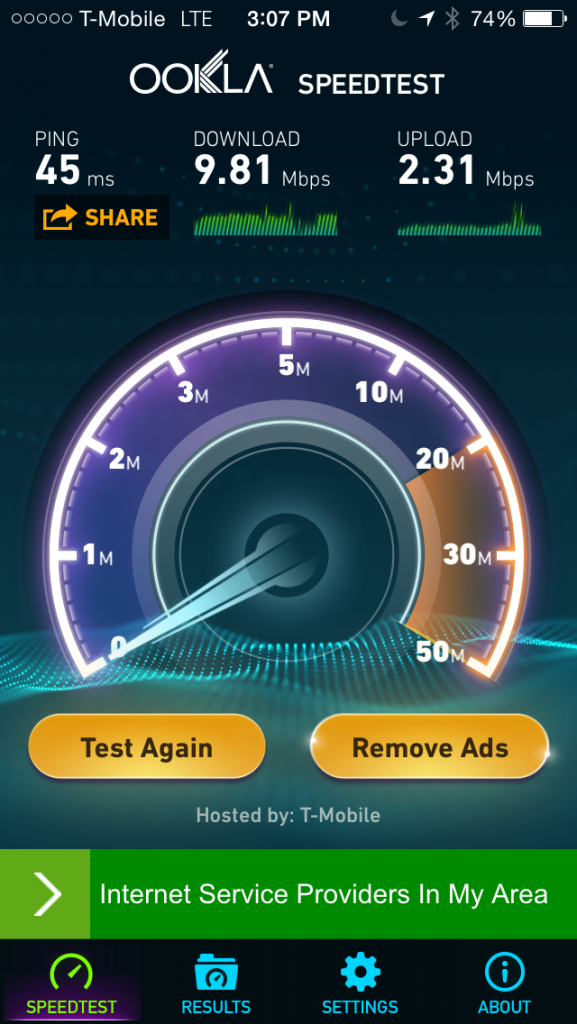Check this out:

I took that screen shot at the excellent Oakleaf restaurant in Pittsboro, NC a few days ago. Note the zero bars (or dots) of telephone service, and the very respectable (tested!) data service. To confirm what the hollow dots said, I tried to make a call. Didn’t work.
This seems to be a new thing for T-Mobile in North Carolina, where I spent much of this summer — or at least in the parts of it where I visited.
The company’s mobile phone coverage is pretty lousy to begin with, on the whole: great on highways and in the larger towns; but spotty when you head into the suburbs and countryside. What changed is the sudden near-disappearance of voice phone coverage in some places where it had worked before, and the improvement at the same time of data coverage.
At my sister’s house, near a major interstate highway, I could use my phone on the porch or in the yard, but not indoors, where I’d see the most dreaded two words in mobile telephony: “no service.” Or at least that was the case in July and early August.
Then something strange happened. I started getting data service indoors at her house, and in other places where before there was nothing. But all I got was data, identified by that little “LTE.” Telephony was five empty dots. At my sister’s place I also couldn’t make or get a call out in the yard, on the street, or anywhere in the neighborhood. But the data service was now terrific.
So I’m wondering if this is just me, or if T-Mobile is lately favoring data over telephony in some places. Anybody know? (I note that T-Mobile’s coverage maps only seem to deal with data, not telephony. But maybe I’m missing something.)
By the way, I should add that I wouldn’t trade T-Mobile for any other carrier right now, because I travel a lot outside the country. In addition to fine coverage in New York, Boston, and all the places I tend to go in California, T-Mobile gives me free data roaming and texting everywhere I go, and 20¢/minute on the phone. Yes, the data rates tend to be 2G rather than 3G or 4G/LTE. But it tends to be good enough most of the time. It also makes me tolerant of a less-than-ideal coverage footprint here in the U.S.
Leave a Reply